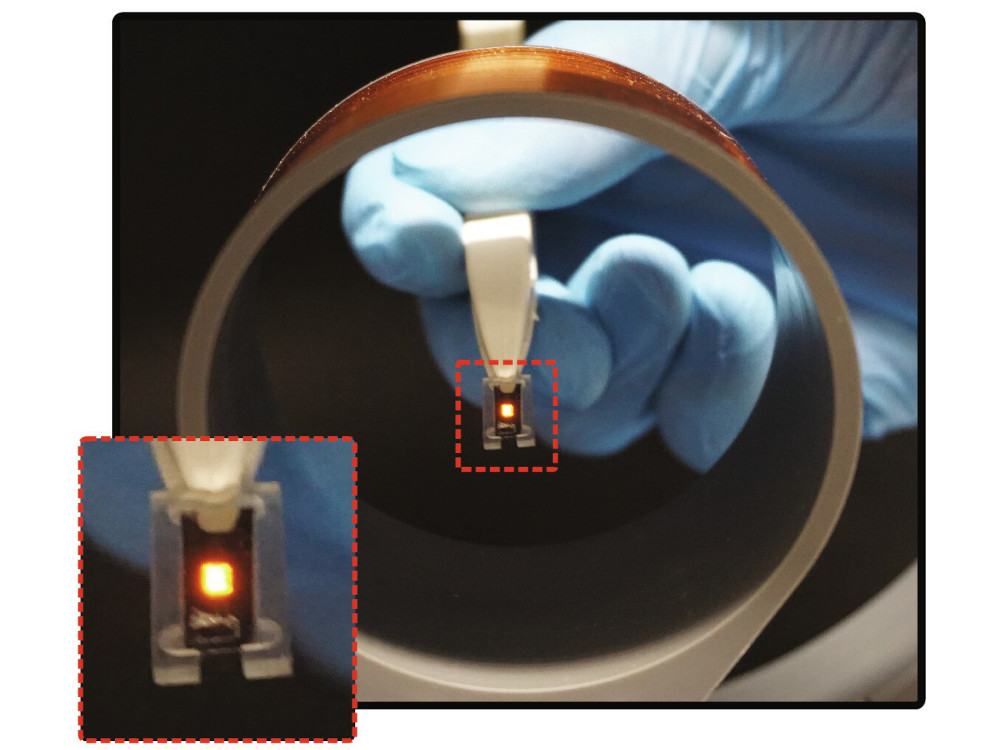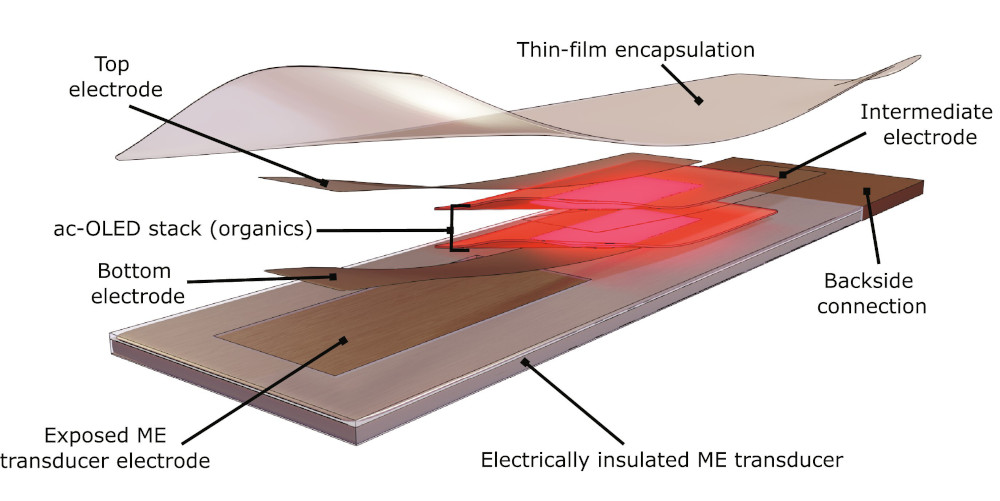
11 Mar Wireless OLED for biomedical applications
A wireless mini OLED that could one day be used for medical purposes in the human body has been developed by a team of researchers from the University of St. Andrews in Scotland and the University of Cologne. Such light sources are to be used for minimally invasive treatment methods, for which it is currently still necessary to implant relatively large stimulators.
Direct, wireless energy supply
The approach is based on the combination of organic light-emitting diodes (OLEDs) and so-called acoustic antennas. They can be very compact compared to electrical antennas. The thin layers of organic materials of OLEDs can be applied to almost any surface. In their work, the researchers are using this property to coat the small acoustic antenna directly with OLEDs and thus combine the properties of both technologies in an extremely compact component. The acoustic antennas serve both as a carrier material and as an energy source for the specially developed OLEDs: the antennas convert the energy of a magnetic field into a mechanical oscillation and then into an electric current; a process known as the magnetoelectric effect. The new light sources operate at sub-megahertz frequencies, as waves in this frequency range are only weakly absorbed by water.

The organic layers of the OLED are applied directly to the acoustic antenna, which supplies the current based on the electromagnetic effect by means of an external magnetic field. Image: American Association for the Advancement of Science (AAAS), taken from: Julian F. Butscher et al., Wireless magnetoelectrically powered organic light-emitting diodes.Sci. Adv.10,eadm7613(2024). DOI:10.1126/sciadv.adm7613
Optical stimulation instead of electrodes
In recent years, optical stimulation techniques have emerged in medicine as a promising alternative to electrical stimulation using electrodes, as they enable more selective stimulation, sometimes even at the level of individual cells. Such techniques have already shown promising results in initial clinical studies, for example in the treatment of an otherwise incurable eye disease. “Our novel wireless light source combines minimal device size, low operating frequency and optical stimulation,” says Humboldt Professor Malte Gather, Head of the Humboldt Centre for Nano- and Biophotonics at the Department of Chemistry of the Faculty of Mathematics and Natural Sciences at the University of Cologne. “In many novel applications, several sites need to be stimulated independently of each other, which is why modern brain stimulators often contain a large number of electrodes. In the case of the wireless light sources presented, the devices can be addressed and operated independently of each other without the need for additional and potentially bulky electronics.”
Frequency-dependent control
This is made possible by the fact that the operating frequencies of different acoustic antennas can be set to different values. Using different resonance frequencies, this could enable the individual control of several stimulators in different regions of the body, for example to treat paralysis in the late stages of Parkinson’s disease. In the next step, the researchers say they want to further reduce the size of their wireless OLEDs and test their technology in an animal model.
Original publication:
[Julian F. Butscher et al., Wireless magnetoelectrically powered organic light-emitting diodes.Sci. Adv.10,eadm7613(2024). DOI: 10.1126/sciadv.adm7613]
Source: portal.uni-koeln.de
Image: American Association for the Advancement of Science (AAAS), taken from: Julian F. Butscher et al., Wireless magnetoelectrically powered organic light-emitting diodes.Sci. Adv.10,eadm7613(2024). DOI:10.1126/sciadv.adm7613






